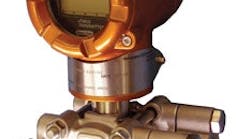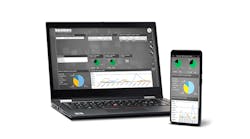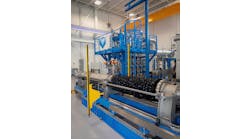Consequently, Yamatake’s Azbil AT9000 advanced pressure transmitter is based on piezoresistive technology that’s extremely repeatable, and so can provide the stability required in many applications. The piezoresistive sensor consists of a silicon substrate and a micro-machined diaphragm that deforms with pressure, which allows the sensor to measure resistance variances. AT9000’s sensor is bonded to the unit’s mechanical structure, which helps Yamatake’s eliminate dissimilar materials that can contribute to erroneous readings.
“We changed the structure of the sensor, so it now has the best stability specification in its market and industry,” says Harvey. “In fact, AT9000 maintains a stability of ±0.1% of upper range limit (URL) for 10 years. It replaces a product that had ±0.1% of URL for one year. Besides reduced maintenance and labor, this stability also means tighter control, increased throughput, and better quality, too.”
Once it developed AT9000’s piezoresistive sensor, Yamatake integrated features to make its new smart transmitter useful to users in various process industries. For example, AT9000 offers:
- Virtually zero downtime due to calibration;
- First-day accuracy throughout the transmitter’s life;
- User-customizable interface that can measure and display in units chosen for specific applications;
- Optional alarm output functions to alert users to small problems before they become big ones; and
- Certification to SIL2 of the IEC61058 standard by TÜV for use as a component in a Safety Instrumented System (SIS).
“Besides displaying its data in any configuration or units users want, AT9000 has discrete alarm outputs that can be wired to a PLC, annunciator or DCS. I think it’s unique among pressure transmitters. This means users can wire a relay to the device, set high and/or low levels, and then check whether limits are exceeded or if process changes have occurred. Many of AT9000’s features are useful in chemical and petrochemical applications, and its SIL 2 level and alarm functions will be especially helpful where safety is crucial.”
In addition, a summary of AT9000’s specification as a DP transmitter includes its outputs for 4-20mA DC, HART and Yamatake’s proprietary Smart Field Network (SFN) protocol, as well as digital output in DE protocol. Its specified accuracy is ±0.04% of calibrated span (GTX30D/31D/32D). Its measuring span is 0.4 in. of H2O to 2,000 psid in four models. AT9000’s maximum working pressure is up to 6,000 psi; its turndown ratio is 200:1; and it has global FM/NEPSI/ATEX certifications for explosion-proof performance in intrinsically safe settings.
“AT9000’s reference accuracy on key models for flow is ±0.04% of span, which compares to 0.1% to 0.075% for typical transmitters,” adds Harvey “This reference accuracy combined with AT9000’s long-term stability and its other added capabilities packs this transmitter with performance, but not at a premium price.”
For more information, contact Yamatake America at 888.262.4639, email at [email protected] or visit www.yamatakeamerica.com.




